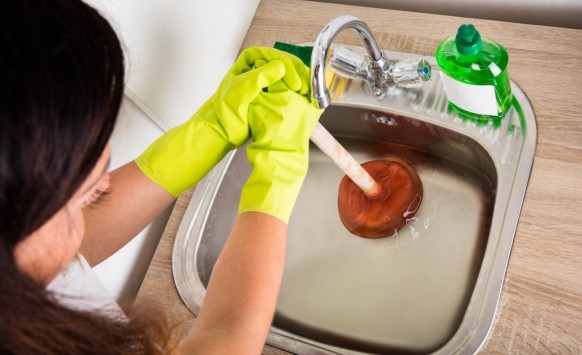Not All Clogs Are The Same
When a slow-running drain is often caused by one of two things. First, gunk and sludge can build up on the sides of your pipes. Over time it can be like your pipes shrunk in diameter, restricting the flow and slowing the drain. The second common cause is a foreign object getting caught. If a big piece of something gets stuck in the drain, it makes it hard for anything else to go down.
If one of these clogs happens in a sink or a shower, it can be frustrating. But if you get a restriction in your sewer main line, it can be disastrous. Because all the water leaves your home through it, a backup there could cover your floor in sewage. But if you know what to look for, your pipes will let you know if this is close to happening.
Your Sewer System Will Tell You If It’s In Trouble
All the drains in your home are gravity-fed. That means a drain higher up getting clogged shouldn’t affect the rest of your pipes. But your sewer main line is at the bottom of that system. If a clog forms there, then drains higher up can back up too. That means drains in the lowest level of your home are your danger zones.
For example, you could be on the bottom floor of your home trying to drain your bathroom sink. If that causes water to come up in the bathtub that means the water has nowhere else to go. In that case, there’s a good chance that your sewer main line isn't working. The same thing can happen to any drains that live on the lowest level of your home.
Common Causes of Clogs in Your Main Sewer Line
Roots are some of the more common things to cause a blockage in your sewer main line. They find gaps in the joints and burrow their way in, filling the space and restricting the flow. Or the ground may settle under your pipe and have a belly form. That lets water and waste build up over time until nothing can get past. The same thing can happen if the joints aren’t aligned right. Foreign objects can get caught on any of those and cause a backup.
What To Do If One Of These Clogs Happen
If you start seeing these signs in your home, you’re going to need more than a plunger. A good first step is to send a snake down the line. That can help clear a blockage and at least get water running again. After that, the next step is to get a look inside your sewer main line. Most trained plumbers have cameras they can send down to see exactly what’s going on. Then they can work with you on the best solution for your situation.
